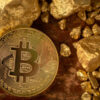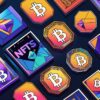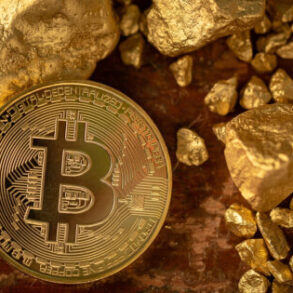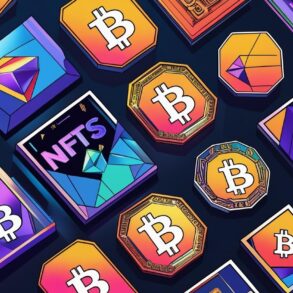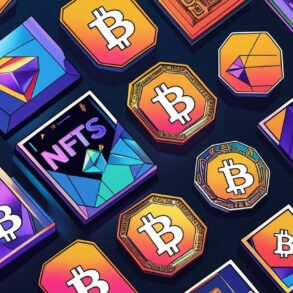
Non-fungible tokens (NFTs) are digital assets encrypted on a blockchain with unique codes that differentiate one from another, giving the purchaser specific rights. NFTs are termed “non-fungible” because they cannot be substituted or exchanged equivalently. One NFT in a collection cannot be identical to another NFT in the same collection.
Buying and selling NFTs can seem complicated, but it’s much easier when you get an overview of the steps. More importantly, familiarization with the process can help you identify and avoid potential scams.
Key Takeaways
- Non-fungible tokens (NFTs) can be bought from marketplaces like OpenSea, Binance, and Magic Eden.
- NFTs transfer ownership of a digital item from one entity to another.
- To buy NFTs, you need a crypto wallet funded with cryptocurrency compatible with the NFT platform.
- There are two ways to sell NFTs: Mint a new one for sale, or buy from other creators and resell it if you’re granted the right to do so.
Types of NFTs
Non-fungible tokens (NFTs) come in different forms and types. They can represent digital items like customized avatars of an individual, artworks, real estate, or any other item that is represented digitally.
These are the most popular NFT types across various domains:
- Digital arts
- Sporting moments, music, academia, and fashion collectibles
- Real-world assets with ownership symbolized by tokens on a blockchain
- Domain names
- Licenses and certifications
- Patents
- Tickets and proof of attendance
- Documents
NFTs present a paradigm shift in how artists maintain creators’ rights, connect with their audience, and monetize their products. Because they exist on decentralized blockchain technology, intermediaries are removed, and transactions are simplified.
Where to Buy NFTs: NFT Marketplaces
There are diverse marketplaces online, from ecommerce platforms where you can buy goods like Amazon to job marketplaces for hiring services like Indeed. The blockchain industry also has marketplaces, such as cryptocurrency exchanges, where you can buy and sell crypto coins or tokens. Newer than crypto exchanges are NFT marketplaces, designed to cater specifically to the needs of NFT fans.
NFT marketplaces are online blockchain platforms facilitating non-fungible token trading between parties. Before NFT marketplaces were created, it was difficult for buyers and sellers to connect. The lack of a centralized platform prompted fans to design the first NFT marketplace to provide a medium of networking for thousands of creators, investors, and traders.
Examples of NFT Marketplaces
There are different types of NFT marketplaces. However, they all have one common feature: their NFT listing feature. Users can buy an NFT at either a fixed-price or auction sale. Beyond how individuals purchase NFTs, the main difference among NFT marketplaces is the type of NFTs offered, fees charged, and how their platforms work.
Here are some popular NFT marketplaces.
OpenSea
With the tagline of being the world’s first and largest NFT marketplace, OpenSea offers several NFTs in different categories like digital art, collectibles, domain names, photography, music, utility, trading cards, and virtual worlds. OpenSea is primarily based on the Ethereum blockchain, although it is compatible with the following chains:
This peer-to-peer NFT platform charges 2.5% on secondary transactions. For primary drops on new mints, fees range from 2.5% to 10%.
Magic Eden
Magic Eden describes its platform as a Web3-ready NFT marketplace on the Solana blockchain. It operates as a community-centric platform, rewarding users with Magic Ticket tokens that are used to access the MagicDAO. Magic Eden has thousands of NFT collections and charges a 0% listing fee and transaction fees that vary based on the scenario.
Rarible
Rarible is a community-centric NFT marketplace, providing interoperability among Ethereum, Solana, Tezos, IMX, and Polygon blockchains. Rarible offers a diverse range of NFT collections, and RARI holders get access to Rarible DAO, which gives them governance rights in the project.
Rarible charges a 1% transaction fee, and customers pay royalty fees on secondary transactions so that NFT creators continue to benefit from their creations.
Binance NFT
Binance NFT was launched in 2021 to unite artists, creators, and crypto enthusiasts in one secure, reliable, diverse platform. It offers customers an NFT marketplace, events, and mystery boxes. The platform charges a flat transaction fee of 1%. You might pay the following additional fees:
- Gas fees: If the NFT you buy is from another platform
- Royalty fees: If you purchase an NFT from someone who is not the creator
- Deposit fees: If you deposit an NFT to the marketplace to sell (this pays network transaction fees)
- Burning fees: If you delete an NFT (paid to miners as network fees)
- Minting fees: If you create an NFT using the platform, there is a fee of 0.001 ETH or 0.005 BNB.
- Smart contract deployment fees: Smart contracts are automatically created for your NFTs, which require an additional gas fee.
- Collection minting fees: If you create an NFT collection, you’ll be charged 0.50 ETH or 1.00 BNB.
Niche Marketplaces
Created and managed by the National Basketball Association, NBA Top Shot is the premier NFT marketplace for basketball fans that allows users to buy, sell, and trade official NBA and WNBA digital collectibles. It also offers opportunities to earn rewards via challenges and drops. Sellers are charged a 5% fee.
Similar to NBA Top Shot, NFL All Day is another professional sport NFT marketplace created and owned by the National Football League. There are several fees, including a withdrawal fee of $8 and foreign transaction fees.
Setting Up Your NFT Account
You need to set up an account on an NFT marketplace to mint, buy, or sell any NFT. After selecting your preferred NFT marketplace, register and open an account. Then, connect a crypto wallet to your account to store crypto for payment purposes.
Using a crypto wallet lets you complete and sign transactions without storing your account information on the platform. However, all transactions are recorded on the blockchain.
Many blockchain wallets are suitable for an NFT account, including popular ones like MetaMask, Coinbase Wallet, and Trust Wallet. Each NFT platform accepts different wallets, so it’s best to check their help sections when selecting a compatible wallet.
Funding Your Crypto Wallet
After creating your wallet, you need to fund it with crypto tokens supported by your chosen platform. Ethereum-based marketplaces generally use ether (ETH) or other tokens created using Ethereum as the main payment currency; others, like NBA Top Shot, a Flow-based platform, use payment tokens based on the blockchain they are built on.
Next, purchase some crypto from a reputable exchange and transfer it to your wallet. You can use your bank account, credit cards, or debit cards at more reputable (and regulated) exchanges, such as Coinbase, Binance.US, and Gemini, to buy your crypto. Deposit funds in your exchange account with fiat and buy the crypto you need. Transfer the crypto to the wallet address you’ve connected to your NFT account.
Ensure you select the correct network when transferring from an exchange to your MetaMask or Trust Wallet. Choosing the wrong network can cause your assets to become lost and unrecoverable.
How to Buy NFTs
After funding your wallet, you can successfully buy NFTs and pay any transaction fees. Most NFT marketplaces list NFTs for sale in two ways: fixed-price and auction listing. Buying an NFT listed at a fixed price is an instant process, but bidding for one in an auction can take days before the auction closes.
There are two types of NFT auctions: a timed auction, which is a type of English auction, and the decreasing-price auction, also called a Dutch auction. The timed auction involves making an offer or submitting a bid and waiting to see if the seller approves your bid and sells to you. If you want to purchase a particular NFT, you’ll have to outbid the highest bidder.
The Dutch auction is more automated and involves the seller setting a start price, which decreases by a certain amount at regular intervals. For example, an NFT can be listed via Dutch auction with a start price of 10 ETH and set to decrease by 0.01 ETH every five minutes. Once a buyer bids at the current price, the auction closes, and the NFT is sold.
Ensure you have enough cryptocurrency to cover the NFT price and gas fees. Insufficient funds will lead to failed transactions and cost you the chance to purchase the NFT you wanted.
How to Sell NFTs
There are two main ways to sell an NFT. You can mint a new NFT, or sell one you’ve previously purchased. Minting is the process of tokenizing a digital item on the blockchain. The two protocols used most often for minting an NFT are the ERC-721 and ERC-1155 standard protocols, either of which is embedded in each NFT platform. There are others you might need to become familiar with, depending on the platform you choose.
Minting an NFT
Here’s how you can mint an NFT for sale:
- You need a PC and blockchain wallets sufficiently funded with the crypto coin supported by the NFT marketplace where you want to mint.
- Create the digital item you want to mint on the blockchain. It could be an artwork, music, or a document.
- Each marketplace has standard requirements for different digital item uploads, so remember to find out what is required.
- Sign into the NFT marketplace and search for the “create” or “add new item” icon.
- Upload a high-quality version of your digital item with a catchy name and interesting description.
- Decide if your NFT will be single-edition or part of a collection, and click the create icon to mint your NFT.
- Make sure you run a final check on the details you’ve provided before hitting the last “create” button.
Reselling an NFT
Some NFT marketplaces reward their creators by allowing them to set up royalties on their NFTs. Using royalties, a person can buy an NFT and resell it. Ownership is transferred to the new buyer, but the creator gets a commission every time it resells. In this way, NFT creators can continue being paid for their work.
Listing an NFT
To sell an NFT, find where it’s located in your collection. Then open it and tap the “sell” button. Immediately, you’ll be redirected to the listing page, where you determine how you want the NFT listed and the sale terms.
Depending on your NFT marketplace, you might be charged a listing fee when listing an NFT for sale. To avoid failed transactions, you should ensure you have enough crypto to pay relevant fees to complete the process.
What Are NFTs Used for?
NFTs are used to secure and transfer ownership of digital items, be it an image, audio, video, documents, avatars, tickets, digital art pieces, virtual worlds, game collectibles, or anything else that can be digitized.
Can Anyone Make NFTs?
Anyone can make NFTs, provided they can invest time and capital into the process. The most demanding part is creating the digital item you want to mint into an NFT.
How Much Does It Cost to Make NFTs?
There are different costs attached to making NFTs. While several NFT platforms allow users to create NFTs for free, there are usually fees for listing them. The miners or validators on the blockchain networks used to create the NFT will need to be paid transaction fees for the work done, so costs are generally a combination of listing and blockchain fees.
The Bottom Line
There are many reasons why crypto enthusiasts buy NFTs, ranging from investing in collectibles to trading. Some make NFTs and list them on exchanges for income from primary sales and to try and create passive income from secondary sales.
With a bit of research, time, and creativity, anyone can take advantage of this emerging market to make some money doing something they enjoy.
The comments, opinions, and analyses expressed on Investopedia are for informational purposes only. Read our warranty and liability disclaimer for more info.
This post was originally published on this site be sure to check out more of their content


